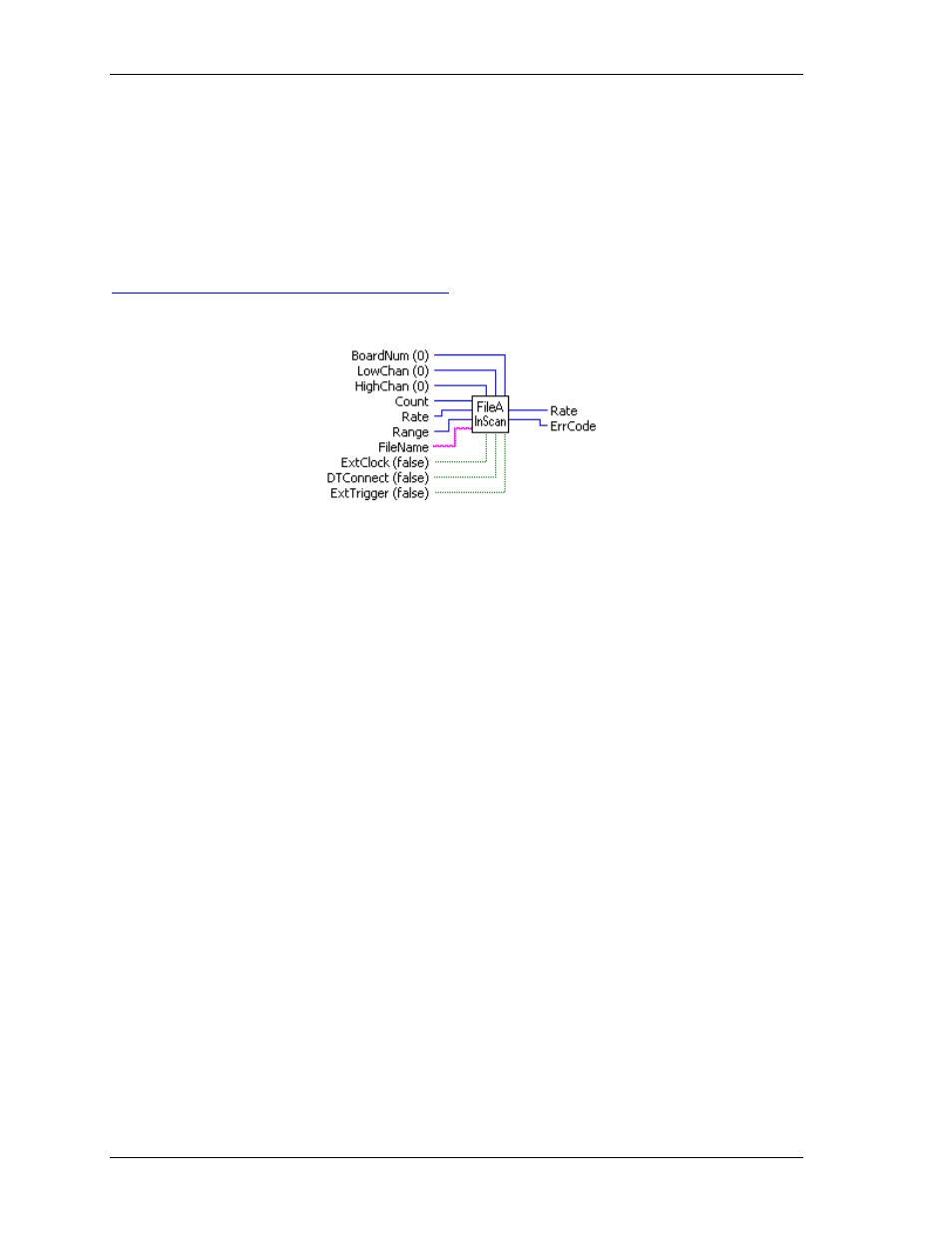Streamer file vis, Fileainscan.vi – Measurement Computing UL for NI LabVIEW User Manual
Page 83

Universal Library Virtual Instruments (VIs)
Streamer File VIs
Streamer File VIs
FileAInScan.VI
Scan a range of A/D channels and store the samples in a disk file. This VI reads the specified number of A/D
samples at the specified sampling rate from the specified range of A/D channels from the specified board. If
the A/D board has programmable gain then it sets the gain to the specified range. The collected data is
returned to a file in binary format. Use FileRead.VI to load data from that file into an array. Refer to the
board-specific information contained in the Universal Library User's Guide (available on our web site at
determine if this function is supported on your
board.
Summary:
Inputs:
BoardNum
[U32] - The board number assigned when installed with InstaCal. Can
be 0 to 100.
LowChan
[I32] - First A/D channel of scan.
HighChan
[I32] - Last A/D channel of scan.
Count
[I32] - Number of samples to collect.
Rate
[I32] - Sample rate in samples per second (Hz) per channel.
Range
[I32] - Range code.
FileName
[abc] - Name of disk file.
ExtClock
[TF] - External (True) or internal clock (False).
DTConnect
[TF] - DT connect option (True). No DTConnect is (False).
ExtTrigger
[TF] - External trigger (True). Internal is (False).
Outputs:
Rate
- Actual sampling rate
ErrCode
- Error code. See ErrMsg.VI
Arguments:
BoardNum
The board number associated with a board when it was installed with InstaCal. The
specified board must have an A/D.
LowChan
First A/D channel of scan.
HighChan
Last A/D channel of scan.
Low/High Channel
#: The maximum allowable channel depends on which type of
A/D board is being used. For boards that have both single-ended and differential
inputs, the maximum allowable channel number also depends on how the board is
configured. For example, a PCI-DAS6025 has 8 channels for differential, 16 for
single-ended mode.
Count
Specifies the total number of A/D samples that will be collected. If more than one
channel is being sampled then the number of samples collected per channel is
equal to
Count
/(
HighChan
-
LowChan
+ 1).
Rate
(input)
The maximum sampling rate depends on the A/D board that is being used.
83
